
There are five paintings by Bruegel dedicated to the seasons, and one of them is the “Harvest” in the Metropolitan Museum. She, like the others, was commissioned by Niklas Yongelink, the perennial patron of the artist, for his house near Antwerp.
In this series, the medieval tradition of decorating calendars with images of human occupations related to a particular month of the year was reflected. “Harvesting.” as it is considered, corresponds to August. At the same time it is already a purely Renaissance work, it is notable for the influence of Italian Renaissance painting, the wealth of which Bruegel could see during his travels.
However, everything he perceived was greatly reworked, and his own, Bruegelian, perception of the world comes to the forefront. Take, for example, that none of his contemporaries created such landscapes and panoramic pictures of peasant labor.
The freely stretched landscape – the golden sea of wheat, the village and the yellow fields in the distance – leaves in a hazy haze, towards a distant lake. This space is habitable by people who are reaping, knitting bundles, carrying a huge load of wheat, eating and sleeping under a tree, and there, in the countryside, are also engaged in economic affairs.
It is not known where Bruegel was born, but he often visited the countryside and knew the peasant life well. She was for him a constant source of inspiration, for which he received the nickname “Peasant”. He knew how to mercilessly uncover the evil sides of human nature, Brueghel portrayed the peasants with sympathy and admiration for their work and rest.
Here, as in the rest of the cycle, the balance of nature and man is emphasized, which is achieved only by a worthy life. To conclude that on which contract between man and nature – read God – peace holds, Bruegel unobtrusively brings his picture.
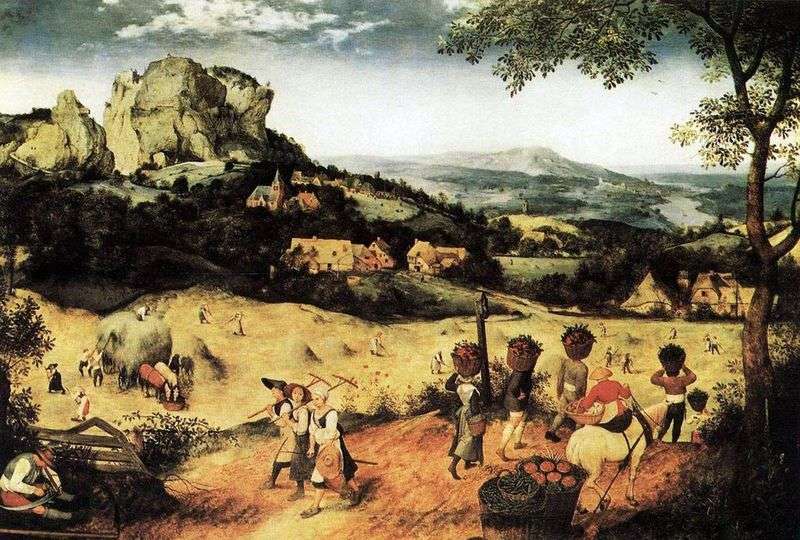 Haymaking by Peter Brueghel
Haymaking by Peter Brueghel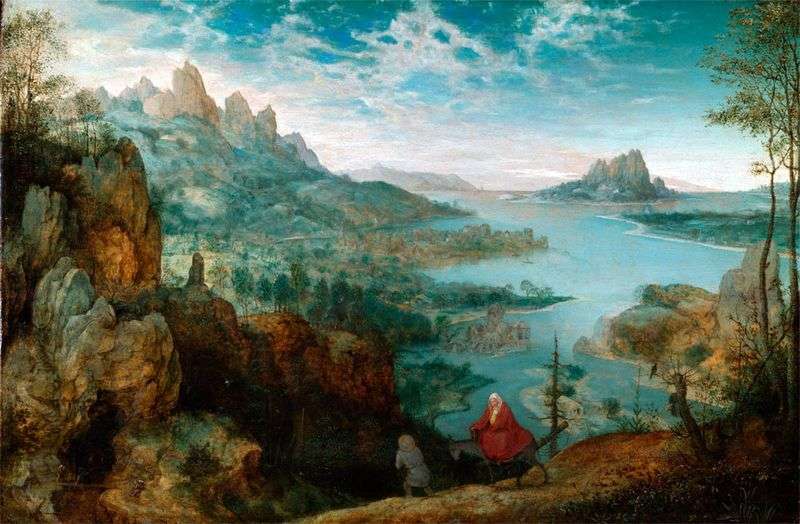 On the way to Egypt by Peter Brueghel
On the way to Egypt by Peter Brueghel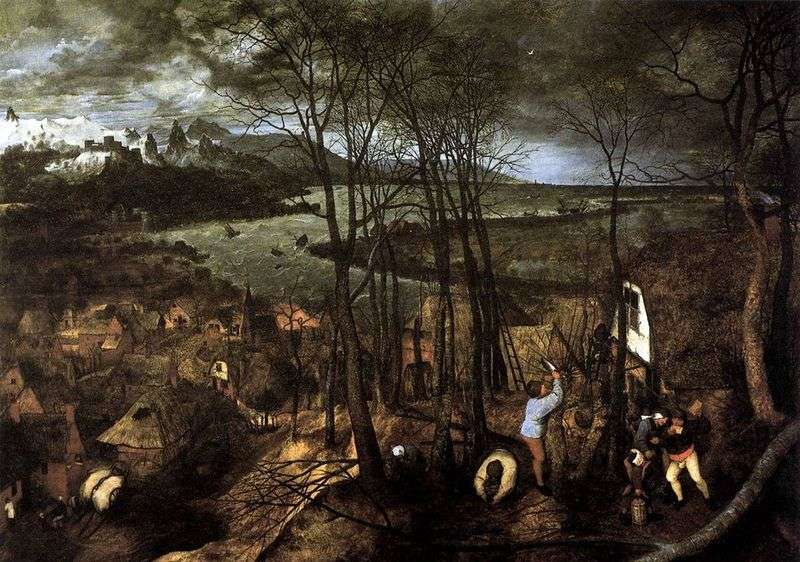 A gloomy day. Cycle of the Seasons by Peter Brueghel
A gloomy day. Cycle of the Seasons by Peter Brueghel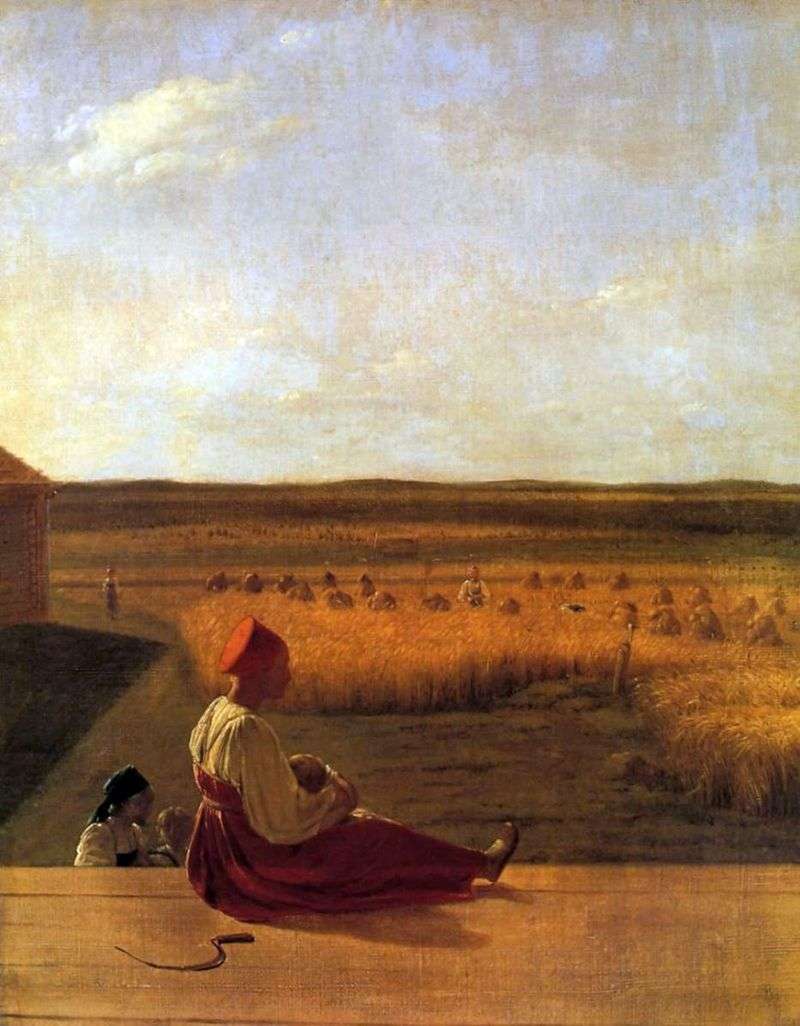 In the harvest. Summer by Alexei Venetsianov
In the harvest. Summer by Alexei Venetsianov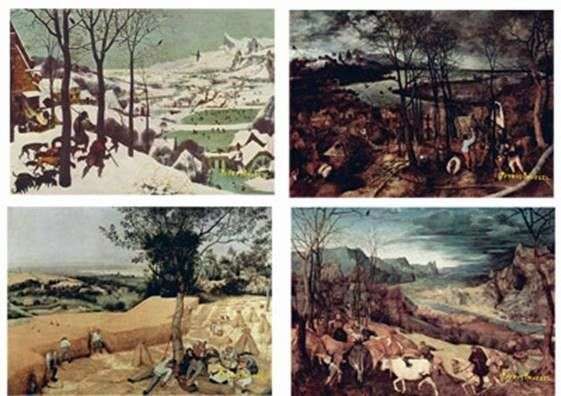 Seasons by Peter Brueghel
Seasons by Peter Brueghel The Feast of St. Martin by Peter Brueghel
The Feast of St. Martin by Peter Brueghel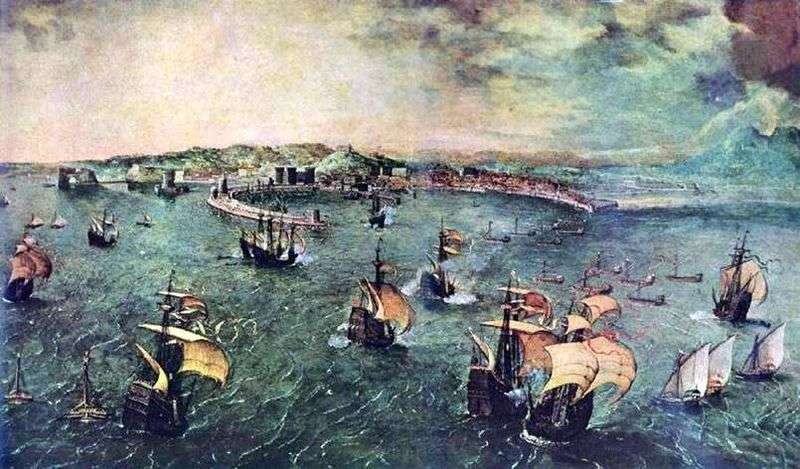 Naval Battle in the Gulf of Naples by Peter Brueghel
Naval Battle in the Gulf of Naples by Peter Brueghel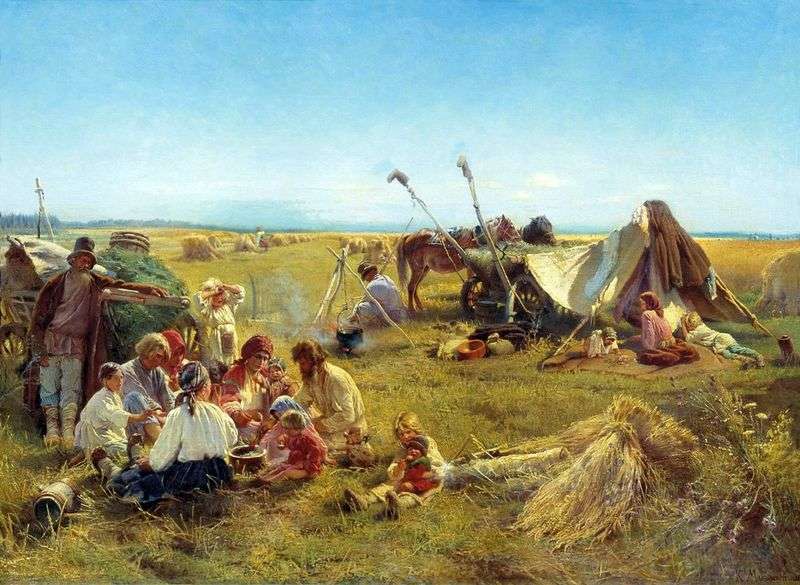 Peasant lunch during the harvest by Konstantin Makovsky
Peasant lunch during the harvest by Konstantin Makovsky